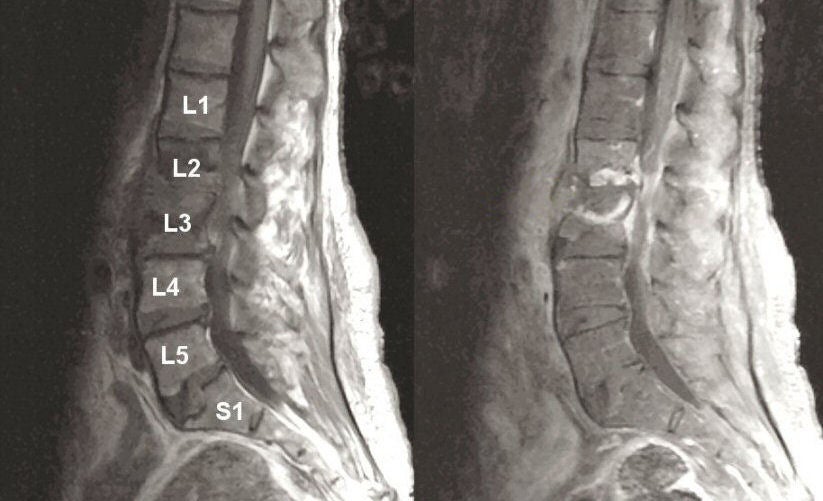
|
A 44 year-old man underwent elective disk surgery at the L2-L3 level. Three days later, he developed low back pain associated with fever. The next day, he developed numbness and weakness of both legs. |

![]()
![]()
| Diskitis and Vertebral Osteomyelitis: Sagittal MRIs of the
Lumbar Spine; (Left) T1-weighted image; (Right) T1-weighted with
gadolinium image. Note the destructive process at the L2-L3 interspace, that enhances
with gadolinium and spreads into the adjacent thecal sac. This is a case of diskitis and
adjacent osteomyelitis with subsequent inflammation and compression of the cauda
equina. Infection of the disk and surrounding tissues most often occurs from spread through the blood system to the vertebral body, directly to the epidural space, or both. However, it can also occur as an operative complication. Patients most often present subacutely over days with fever and spine pain, often followed by radicular symptoms and then frank spinal cord or cauda equina compromise. |
Revised
11/30/06
Copyrighted 2006. David C Preston